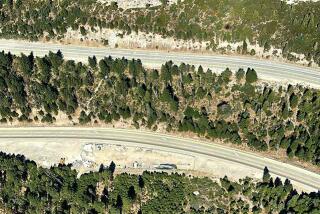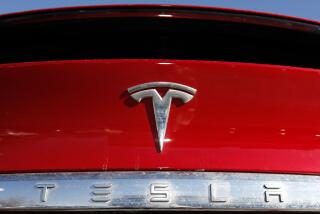Federal regulators investigating fatal Tesla Model 3 crash in Florida
The National Transportation Safety Board said it’s investigating Friday’s fatal accident in which the roof of a Tesla was sheared off in a collision with a commercial truck in Delray Beach, Fla.
The NTSB, in cooperation with the Palm Beach Sheriff’s Office, is sending three officials to help with the probe, the agency said on its official Twitter page. The National Highway Traffic Safety Administration, part of the U.S. Department of Transportation, is also sending a team to investigate the crash.
NHTSA also said it has opened an investigation into a Tesla Model S crash in Davie, Fla., on Feb. 24.
In Friday’s crash, the driver was killed when he drove his 2018 Tesla Model 3 under a 2019 International LT truck. According to the Sheriff’s Office, the tractor-trailer was turning left and pulled into the path of the Tesla, which came to a halt three-tenths of a mile south of the collision, where the driver was pronounced dead.
It wasn’t immediately clear if Tesla’s driver assistance feature known as “Autopilot” was enabled. Tesla declined to comment.
In the Davie crash, a Tesla Model S left the road, struck a palm tree and caught fire. The driver was killed. Witnesses said the door handles wouldn’t work and the airbags didn’t deflate, so they could not pull the man out. The right front wheel was found on the other side of the road.
The NTSB is investigating other Tesla crashes.
In March 2018, a Tesla Model X with the company’s Autopilot system engaged struck a concrete barrier in Mountain View, Calif. The driver was killed. A preliminary NTSB report found that three seconds before the crash, the car sped up and there was no evasive action.
In May 2018, a Model S driving over 100 mph in Florida crashed and burst into flames, killing two teenagers.
In 2016, a man driving a Tesla Model S in Florida was decapitated when his car, with Autopilot engaged, drove under a semi-truck trailer as it crossed the highway. The NTSB blamed both Tesla and the driver.
“In this crash, Tesla’s system worked as designed, but it was designed to perform limited tasks in a limited range of environments,” the board’s chairman, Robert L. Sumwalt, said at the time.
“Tesla allowed the driver to use the system outside of the environment for which it was designed ... and the system gave far more leeway to the driver to divert his attention to something other than driving,” Sumwalt said. “The result was a collision that, frankly, should have never happened.”
Times staff writer Russ Mitchell contributed to this report.
More to Read
Inside the business of entertainment
The Wide Shot brings you news, analysis and insights on everything from streaming wars to production — and what it all means for the future.
You may occasionally receive promotional content from the Los Angeles Times.










